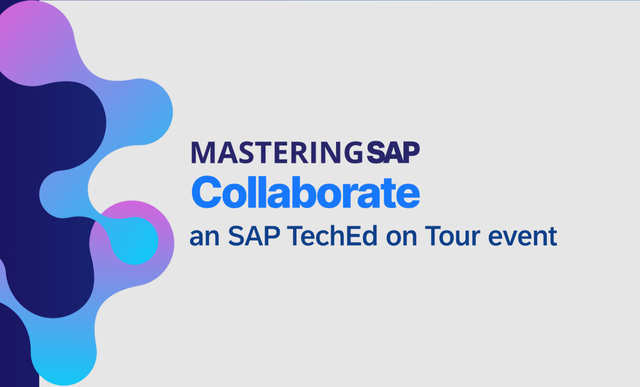Real-Time Inventory and Order Visibility: Key for Successful Supply Chain Management
Meet the Experts
By Probodh Chiplunkar, Chairman of the Board, Ithena Technologies
Contributing Editor: John Yuva, SAPinsider
Inventory and order visibility provides internal operational efficiency and, when shared with the customer, can help cut costs and free up capital. This transparency can also increase customer retention and reach, helping companies achieve successful and profitable omnichannel ordering capabilities.
Explore related questions
With advancements in technology such as Internet of Things (IoT), cloud, and big data, demands and expectations for supply chain management have continuously grown over the past few decades — with some key changes in the business landscape:
- Distribution networks are expanding, with products and orders being spread out over a variety of locations
- Customers expect visibility into product availability and order status
- E-commerce and social media channels push companies toward omnichannel offerings and fulfillment capabilities to remain competitive and capture demand.
Greater organization of real-time data and visibility into inventory and orders can be a crucial tool in achieving more efficient operations and greater customer value. For example, by using SAP technologies like connected assets and warehouses, SAP S/4HANA Cloud, and smart operations management, organizations can create and use connected data to digitize business processes. This data can then be shared with the end consumer, whether in business-to-business or business-to-consumer operations.
How Today’s Technological Landscape Affects Business Operations
The technological reality of conducting business is that there is an explosion of data. While industry standards and literature agree on the attainable value available, in practice it can be difficult to sort through such expansive data without getting lost or confused.
In an unexpected paradox, there is a vast amount of data available, but data intelligence is less accessible. This is evident in the reduction of non-specialized human analytic talent, even as data analysis jobs are on the rise. While data can be mined from everywhere given the right resources, such as application programming interface or extract, transform, and load tools, many organizations can quickly fall into the trap of developing a dependence on master data that has already been gathered, cleansed, and organized. Finding, tracking, collecting, and analyzing custom data is possible and realistic. However, organizations sometimes feel it is not worth the time and effort to cultivate and prove value-added data gathered from their unique business processes.
Another reality is that everything is connected. Consumers are connected via social media to various business channels; corporate devices and assets are connected for greater operational efficiency; and all of this is connected through the cloud.
Such large-scale expansion of data and business process complexity has opened the door for predictive and integrated enterprises, where machine learning, platform and cloud, and analytic capabilities are at the forefront of running efficient operations. Broader, real-time visibility accessible anytime and anywhere is crucial for leveraging big data and making data-driven decisions.
Outlined below are ways inventory and order visibility can help achieve efficient distribution networks, customized customer experience, and uniform omnichannel capabilities.
Distribution networks. The reality today is that there are many points in distribution networks to manage, with the constant possibility of adding more points into a company’s portfolio of operations. Points include warehouses, distribution centers, physical stores, as well as trucks and longer travel routes dispersed along regional and global lines. Manual tracking of supply and demand in this setting would be too tedious and inefficient. Even automated tracking systems can be incapable of providing quick views of aggregated data and operations to internal workers, executives, and customers.
When inventory systems are not centralized, companies face higher risk of overstocking, stockouts, and unaccounted for stock. These data gathering inefficiencies can lead to inaccurate inventory or tracking records that result in lost revenue, either through missed sale opportunities or from customer dissatisfaction.
Additionally, these problems can contribute to markdowns, extra shipping charges, and excess safety stock, all of which increase company costs. With inventory one of the highest organizational costs, freeing up capital is critical to making operational investments in future innovation. With proper management of inventory and order data, large-scale views into operations can offer basic tracing capabilities into essential needs along the supply chain. Managers and executives can pinpoint supply chain locations to direct targeted efforts into increasing efficiency and cutting costs. Even if a slow-moving area cannot be operationalized for greater efficiency, knowledge of this space can help other business units or prove beneficial by sharing it with the customer.
There are several SAP products that can enable easy organizational management and accessible operational clarity, such as SAP S/4HANA Cloud, SAP Extended Warehouse Management, and SAP Integrated Business Planning application for demand. SAP S/4HANA Cloud can help enterprises manage both internal and external resources with native process integration. SAP Extended Warehouse Management provides visibility into complex warehouse and supply chain logistics with advanced inventory tracking. SAP Integrated Business Planning for demand can provide demand forecasting, set inventory targets and buffers, and integrate with plans for allocations and constraints. With each offering unique capabilities, these SAP technologies power visibility into even the most complex operations.
Customers. Global business capabilities have also expanded to give consumers more control over and transparency into their unique product orders. Organized inventory data shared with the customer promotes choices on whether to pick up or have something delivered. With the services provided by businesses today, instant gratification becomes not only a possibility but an expectation. Even if a delivery is late, customers expect a notification about the delay and an adjusted timeframe for delivery. If an option is not available in-store for pick-up, customers expect an internal order to be placed to replenish in-store stock.
Real-time inventory tracking and order visibility allows for easier fulfillment of complex customer orders. A key advantage is sharing this data with the customer. When inventory operations become more transparent, customers feel that they are more in control and in the loop, making the purchasing process a more personal experience than ever before. In the context of a diversified and non-uniform business landscape, when delivery promises are made and kept with information provided to back-up the claims, trust between customers and the organization increases, which can lead to greater customer satisfaction, loyalty, and reach.
With SAP Commerce Cloud, organizations can perform complex catalog management to gather and display consistent product information to customers with key features like artificial intelligence-powered personalization and real-time cloud native add-ons. These functionalities can share their organizational data in real-time with the customer, fostering customer loyalty and trust in the process.
Omnichannel experience. With the current boom in connectivity, businesses are trying to reach customers across a variety of media and channels. This relates not only to marketing efforts but also to purchasing systems. There’s a need for instant gratification, and omnichannel provides purchasing fulfillment. In providing omnichannel purchasing capacities, companies are expected not only to offer multi-channel services but also to keep experiences uniform across these channels, whether on a mobile application, a web page, in-store, or social media.
Even in an environment where omnichannel customer experiences are increasingly common and expected, these experiences are very hard to satisfy, deliver, and execute in a profitable manner. One reason is that omnichannel ordering and delivery can put a big strain on supply chain management, especially if inventory systems are split by channel, customer segment, or product categories.
SAP Upscale Commerce can make it easy to seamlessly execute omnichannel capabilities by allowing organizations to build channel-agnostic storefronts, fulfill omnichannel orders, and cultivate continuity commerce with a drag-and-drop interface and smooth digital merchandising.
Key Benefits of Centralized Inventory Management Systems and Real-time Visibility
Overall, inventory visibility that is shared with the customer, coupled with a streamlined software management system and connected assets (warehouses, trucks, and inventory) can help businesses cut surplus inventory costs, support growth of demand with customer loyalty and reach, deliver predictive analytics for seasonality and overall demand, and help organizations achieve impressive omnichannel capability.
Looking at technologies provided by SAP, including connected warehouse and smart operations capabilites, one can build a scalable model for this digitization. From enterprise warehouse management to connected assets, SAP S/4HANA Cloud enables ease of integration, scalability, and robust architecture for transformation.
Key Takeaways
- Large-scale expansion of data and business process complexity has opened the door for predictive and integrated enterprises
- Inventory and order visibility can help achieve efficient distribution networks, customized customer experience, and uniform omnichannel capabilities
What Does This Mean for SAPinsiders
- Real-time visibility accessible anytime and anywhere is crucial for leveraging big data and making data-driven decisions.
- A centralized view into your distribution network provides supply chain transparency allows for direct targeted efforts into increasing efficiency and reducing costs.
- Increase customer satisfaction, loyalty, and reach by sharing inventory tracking and order visibility data with customers, giving them the feeling of greater control over their purchasing decisions.
- Execute a seamless omnichannel distribution network with channel-agnostic storefronts and a drag and drop interface for a smooth digital buying customer experience.
Probodh Chiplunkar
Leading from the front, an Entrepreneur passionate about bringing opportunities for change to businesses through technology. Probodh excels at providing modern approaches using transformative technologies to the ecosystem of customers and partners. Utilizing the advent of IoT and digital disruption, ITHENA’s persona-based AI platform enable customers to achieve new business models, improvement in operational efficiencies and profitability.









